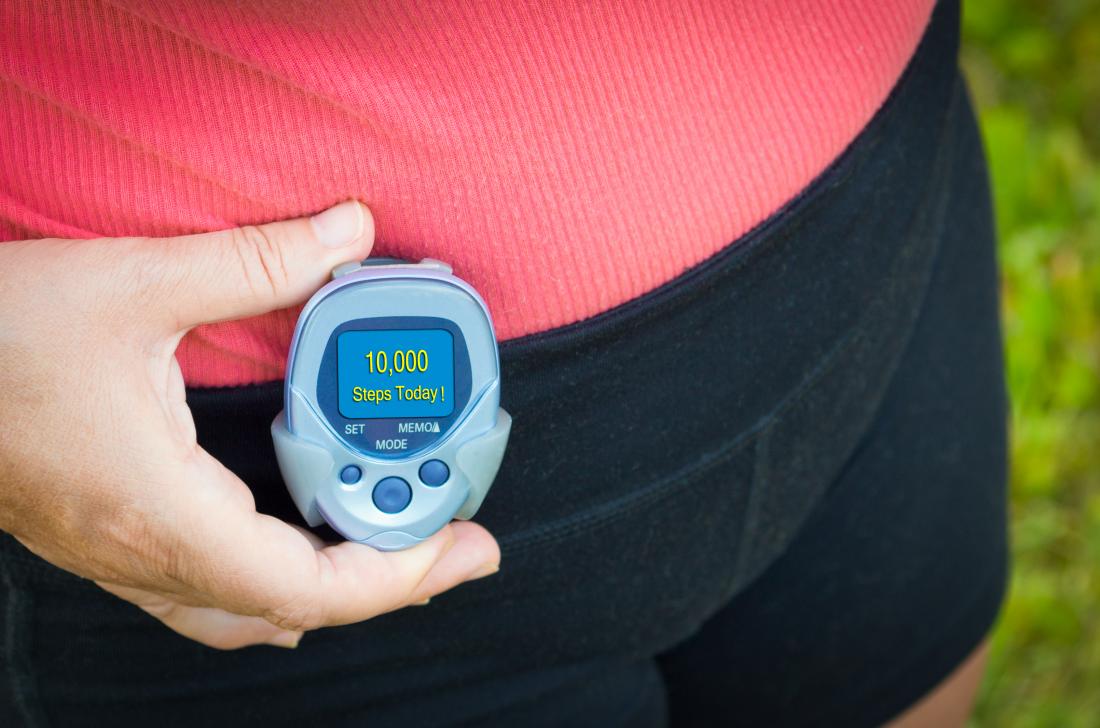[dropcap]P[/dropcap]edometers and fitness trackers are great for recording daily activity such as calories burned and daily steps. They can be worn all day so you can see how far you travel or just during times where you work out.
The best pedometers can be worn on your body or downloaded as an app on your smartphone. But how do you know which one to choose?
Here is how to choose your first pedometer.
Digital vs Smart Pedometers
While it’s possible to get mechanical pedometers, they aren’t as great as modern digital or smart devices.
Digital Pedometers
These have small metal pendulums that swing as you make a step. As the pendulum swings back and forth, a step is recorded when it completes the circuit. Before the invention of smartphones and smartwatches, this was the most popular type of pedometer.
Smart Pedometers
Smart pedometers are smartphones without the phone. Accelerometers tell the device when you take a step.
What Pedometer Is Best?
No matter what pedometer you buy, it will use built-in sensors to track how many steps you take throughout the day or during your session. For example, Fitbit fitness trackers use accelerometer chips and other programming techniques to detect and record motion as a step. Smartphone apps use the same process, counting the number of steps you take as you carry it around with you and recording it in the dedicated app.
You can also get pedometers that you wear around your waist. These have varying tracking technologies, meaning that the accuracy of the results will also vary. The most accurate waistband trackers will have an accelerometer built-in, whereas less accurate waistband pedometers will use hairspring mechanisms.
It’s possible to get your hands on free pedometers too. They are usually given away as part of health promotions but they will often come with hairspring mechanisms, making the results less reliable.

How To Wear A Pedometer
Most pedometers are now worn as:
- A waistband or in your pocket;
- A wristband;
- A smartwatch;
- An app on your smartphone.
Waistband/Pocket Pedometers
Waistband and pocket pedometers must be fitted vertically to get the best and most accurate results. It’s common for waistbands to tilt slightly due to different body types so be sure that they are snug and perfectly vertical before going out. However, pocket pedometers or those worn on a lanyard can remove the verticality issue and still provide accurate step counts.
Wristband Fitness Trackers
One of the most popular brands of fitness tracker is the Fitbit but there are so many available in the current marketplace. They are available in all sorts of shapes and sizes, with most being customizable in terms of swapping bands so they match the color of your outfit that day.
Pedometer Watches
Smartwatches are also modern tools used to track step counts during a workout or over the course of your day. They don’t require syncing to any other app or bring any other device with you since everything is already built into the watch. One popular example of smartwatches is the Apple Watch.

Pedometer Apps
Finally, pedometer apps can also be used to track steps taken. Check the data at the touch of a button on your smartphone. There are a number of apps that can use the data collected, each coming with its own unique benefit. Of course, the steps can only be tracked if you carry your smartphone with you.
Decide What You Want Your Pedometer To Do
Standard pedometers track steps but here are some of the main functionalities you’ll need to decide what you want it for.
Total Steps
Every pedometer comes with this basic functionality; they will count how many steps you take and how far you have travelled. For a lot of people, this is all they need to stay motivated and reach their daily goals.
Workout Progress
Some people save their cardio and steps purely for working out at the gym or going for a run outside. The pedometers must come with a workout feature or have the ability to reset distances/steps on a frequent basis so a specific workout can be tracked.
Other Tracking
According to Healthcare Weekly, the best pedometers can do more than just track steps. You need to know what is important to you when choosing your first pedometer. Examples include:
- Calories burned estimate;
- Clock;
- Alarm;
- Speed estimate;
- Pulse monitor;
- Sleep monitor.
Distance Accuracy
The accuracy of your pedometer starts with the mechanism. The most accurate pedometers use accelerometers to track steps and goals, while the least accurate devices use springs.
It’s simple to test how accurate your pedometer is. Turn the device/app on and count off 100 steps. Compare that to the pedometer reading. If you find that the number is slightly off, adjust its position on your body until it’s correct.
It may take some time to get this right. For wristbands, in particular, wearing it on your dominant arm can also have an impact so make sure that you set that in the app.
Another thing to be aware of is the length of your stride. Some pedometers will just ask for your height and use a standardized formula to calculate it. If you find the results aren’t accurate, play around with the height until the distance becomes more accurate.

Walking Speedometers/Odometers
Walking speedometers use GPS sensors to track speed and distance. However, they don’t work on a treadmill; they can only be used outside. Brands such as Garmin and Fitbit and include GPS-based speed and distance in their devices.
Other brands may use accelerometers in your shoe to measure this. The sensor must be calibrated correctly for the best results. Unlike the above devices, shoe sensor models can also be used outside and on a treadmill.
Conclusion
This is everything you need to help you choose your first pedometer. Decide if you want to wear it like a waistband or fitness tracker or record everything on your smartphone. It’s also important to know if your pedometer has other functionalities, apart from step counting, you want tracking.
Codrin Arsene is a digital strategist @ Digital Authority Partners, a healthcare marketing agency







